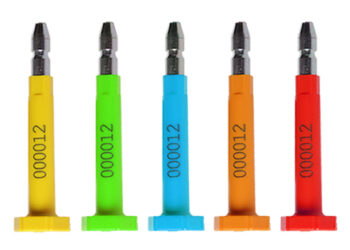In today’s interconnected global economy, the movement of goods across borders and between various modes of transportation is a common occurrence. However, with this increased international trade comes a heightened concern for the security and integrity of goods during transshipment. To address these concerns, the International Organization for Standardization (ISO) developed the ISO 17712 standard, which plays a pivotal role in ensuring the integrity of goods during transshipment.
Understanding ISO 17712: High Security Seals
ISO 17712 sets forth guidelines and specifications for high-security seals used in containerized cargo transportation. These seals serve as a crucial line of defense against tampering, theft, and unauthorized access to cargo during its journey from one point to another. High-security seals are employed to secure containers, trucks, railcars, and other modes of transport, safeguarding the goods within and providing a verifiable method of tracking and confirming the integrity of the cargo.
Features and Types of Seals
ISO 17712-compliant seals are designed with several features that make them highly resistant to tampering. These features include a unique identification number and a barcoded representation of that number, both of which are recorded on the shipping documents. The seals themselves are constructed from robust materials like metal or heavy-duty plastic, making them difficult to break or compromise. Moreover, they are designed to resist various environmental conditions, ensuring that they remain intact even when subjected to extreme temperatures, moisture, and physical stress.
There are three main categories of seals outlined in ISO 17712:
- Indicative Seals: These seals provide a basic level of security by showing visual evidence of tampering. They can be easily broken or removed without specialized tools and are primarily used for non-high-security applications.
- Barrier Seals: Barrier seals are more secure than indicative seals and require tools or force to break. They offer a moderate level of protection against tampering and are suitable for securing cargo with a lower risk of theft.
- High-Security Seals: High-security seals are the most robust and tamper-resistant type. They are designed to withstand sophisticated tampering attempts, requiring specialized tools and a significant amount of time and effort to breach.
Importance in Transshipment
The role of ISO 17712 in ensuring the integrity of goods during transshipment is paramount. When goods are in transit, they are vulnerable to a range of risks, including theft, smuggling, and tampering. High-security seals, as per ISO 17712, act as a deterrent and a means of detection for such threats.
During transshipment, cargo may change hands multiple times and move through different modes of transport, making it essential to have a secure and standardized method of sealing containers and vehicles. The application of ISO 17712-compliant seals allows for a clear chain of custody, ensuring that the cargo’s integrity is maintained from the point of origin to its final destination.
Verification and Compliance
ISO 17712-compliant seals are not just about physical security; they also emphasize documentation and tracking. The unique identification numbers and barcodes on the seals are recorded in shipping documents, and any changes or breaches can be easily identified during inspections. This adds a layer of accountability and transparency to the transshipment process.
Customs and border security agencies often require documentation and evidence of seal integrity during inspections. Non-compliance with ISO 17712 standards can result in delays, fines, and potential legal consequences. To maintain compliance, companies involved in international trade must ensure that the seals they use meet the specifications outlined in the standard.
Conclusion:
ISO 17712 plays a pivotal role in ensuring the integrity of goods during transshipment. By providing guidelines and specifications for high-security seals, the standard establishes a robust framework for safeguarding cargo against tampering, theft, and unauthorized access. These seals not only serve as a physical barrier but also create a verifiable record of the cargo’s security status throughout its journey. As international trade continues to grow, the adherence to ISO 17712 standards remains essential in maintaining the trust and security of the global supply chain.











